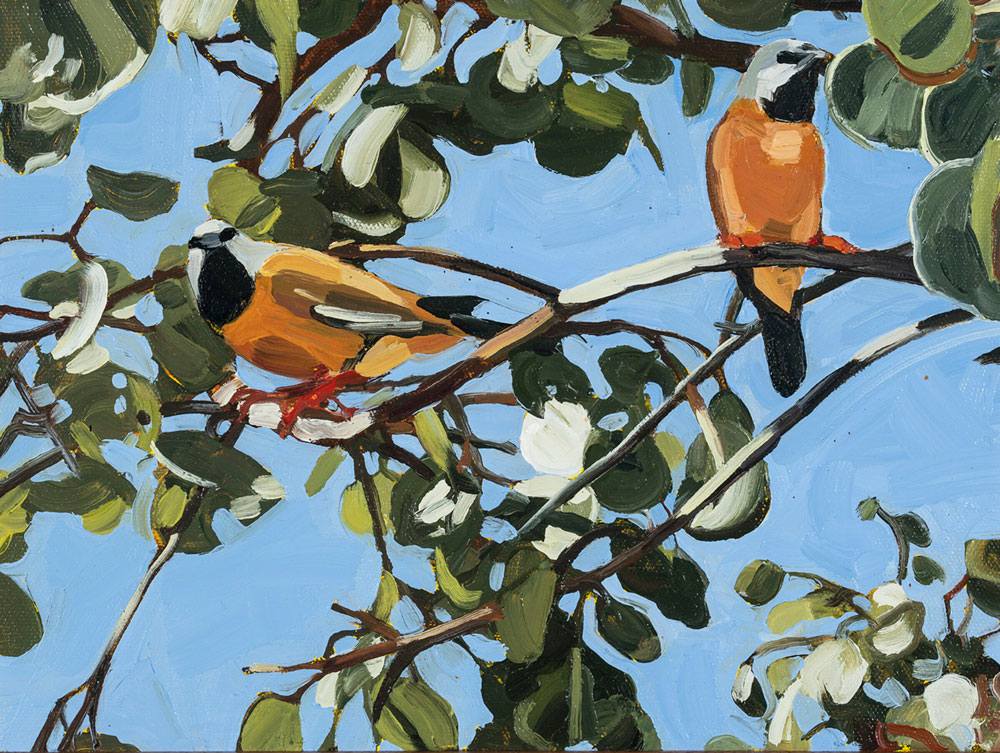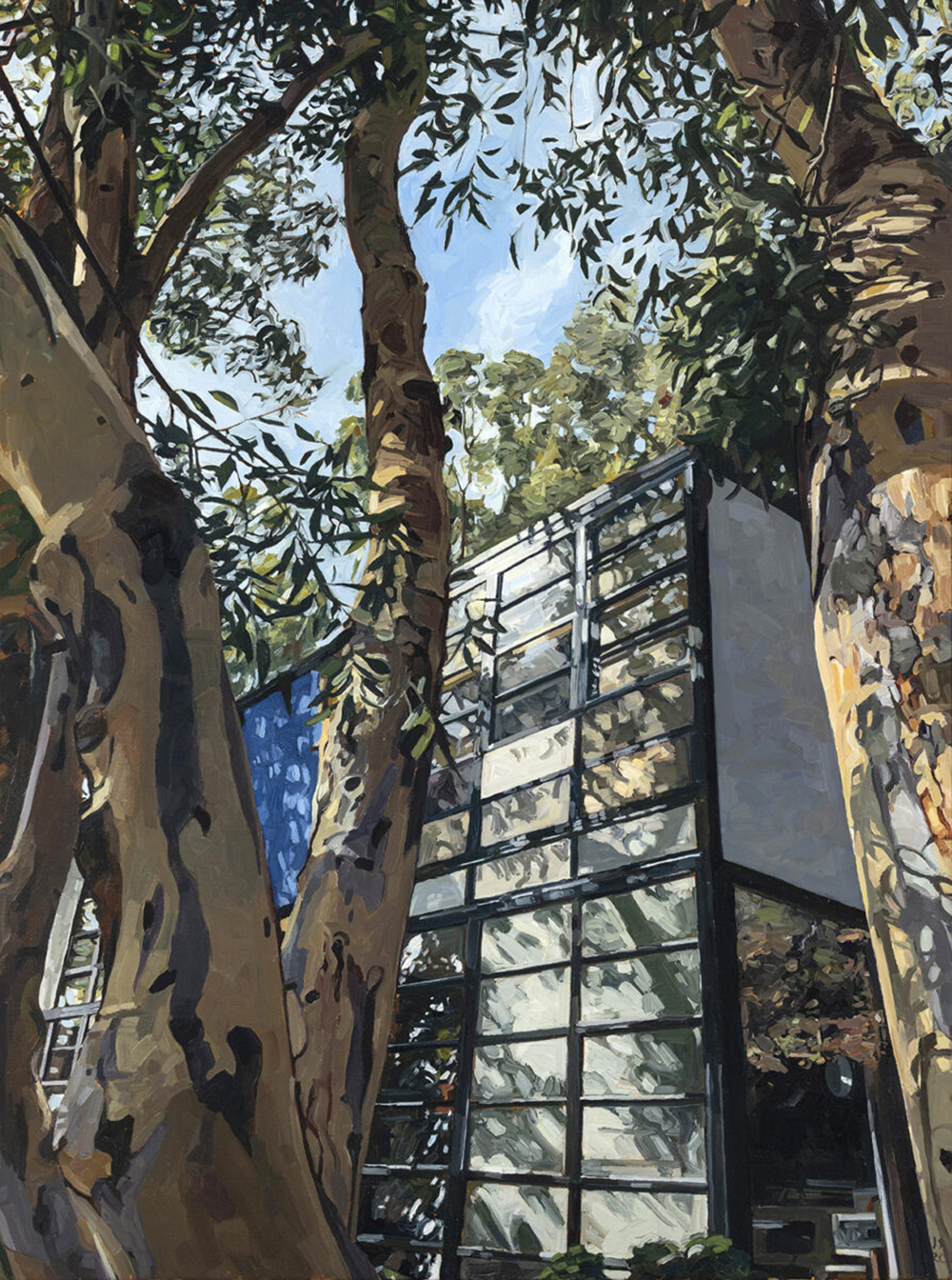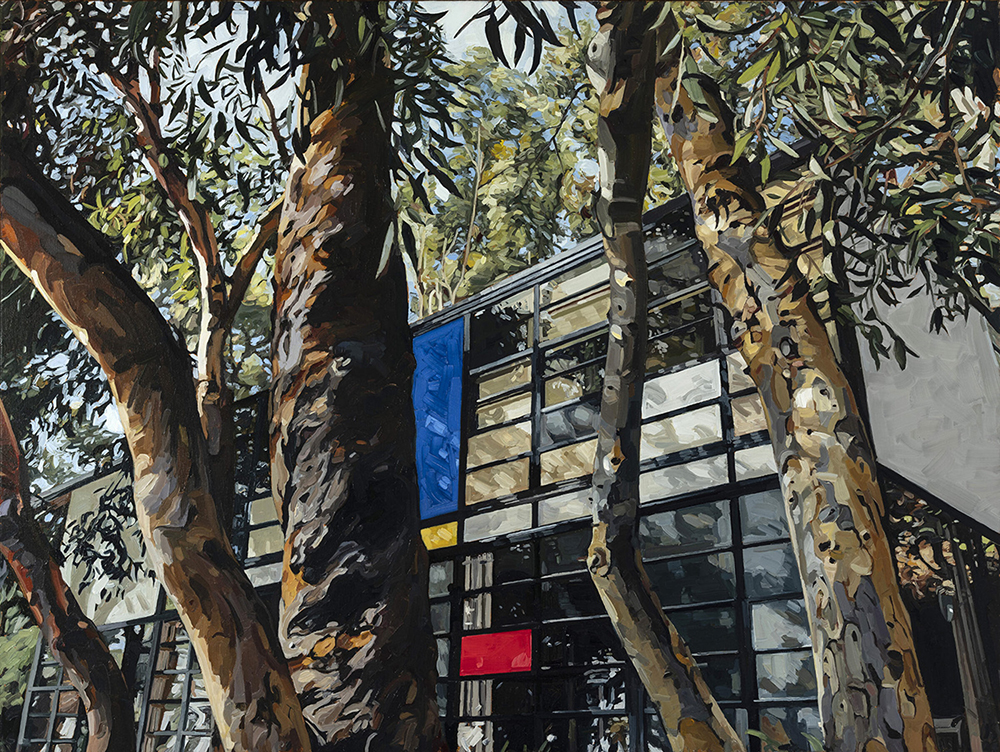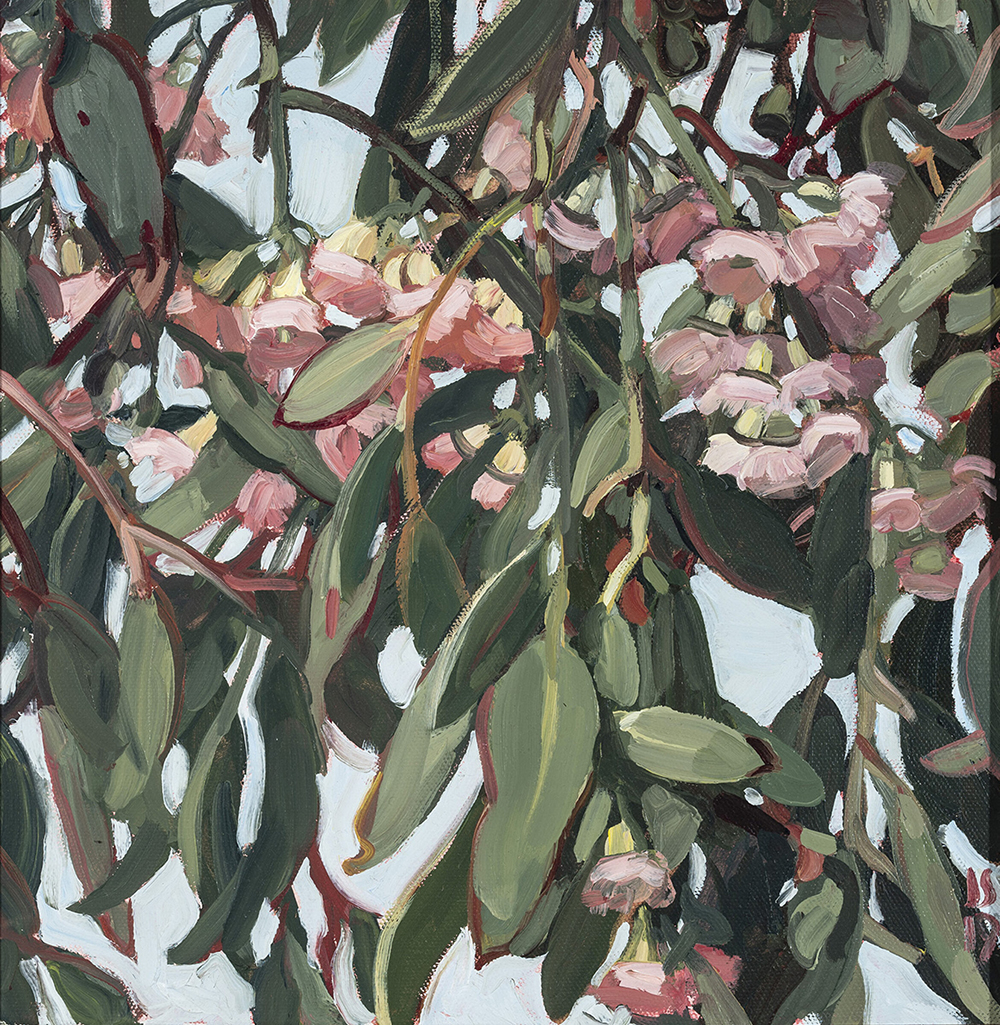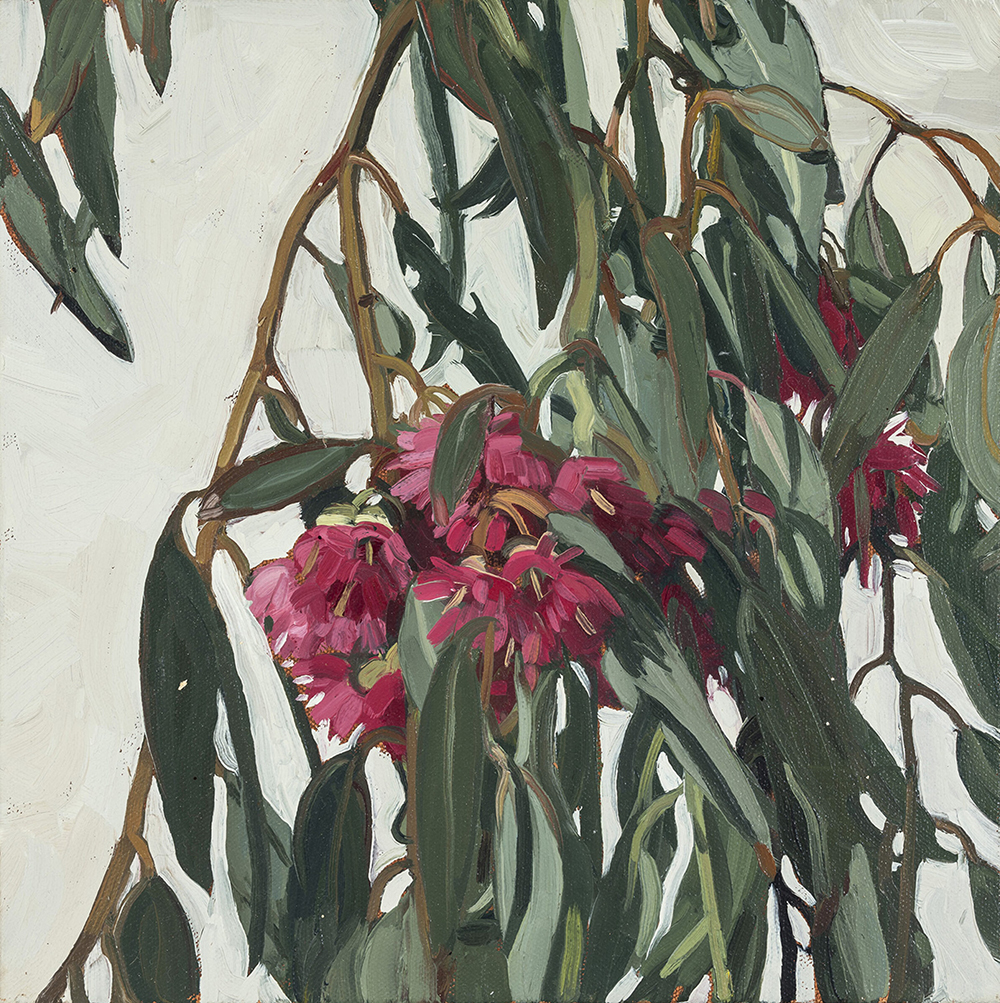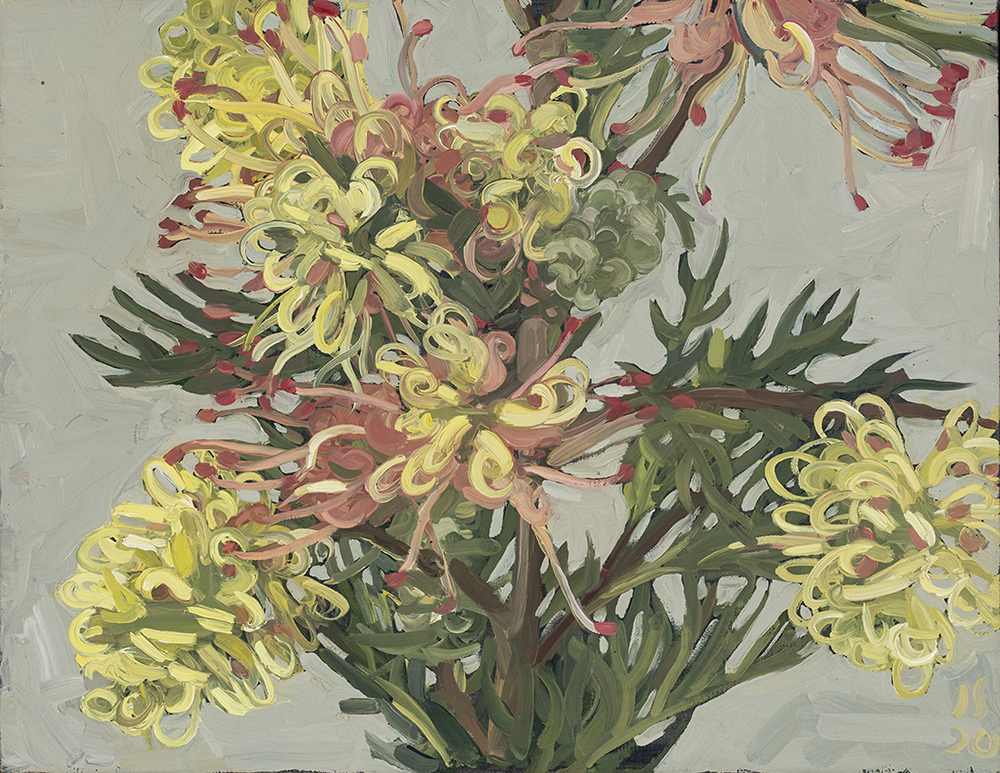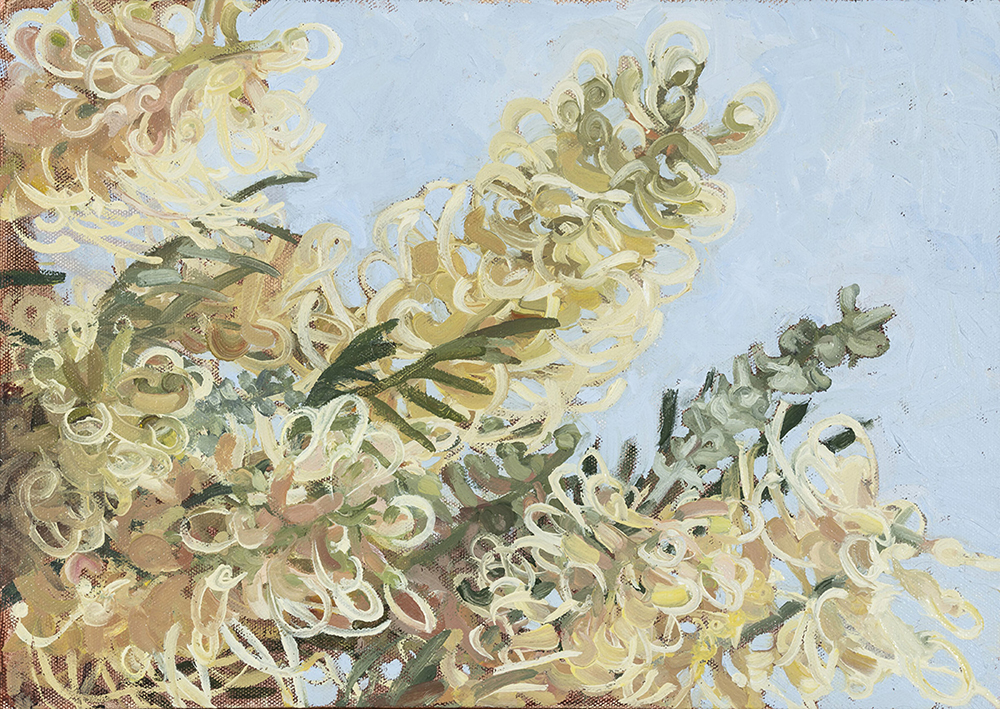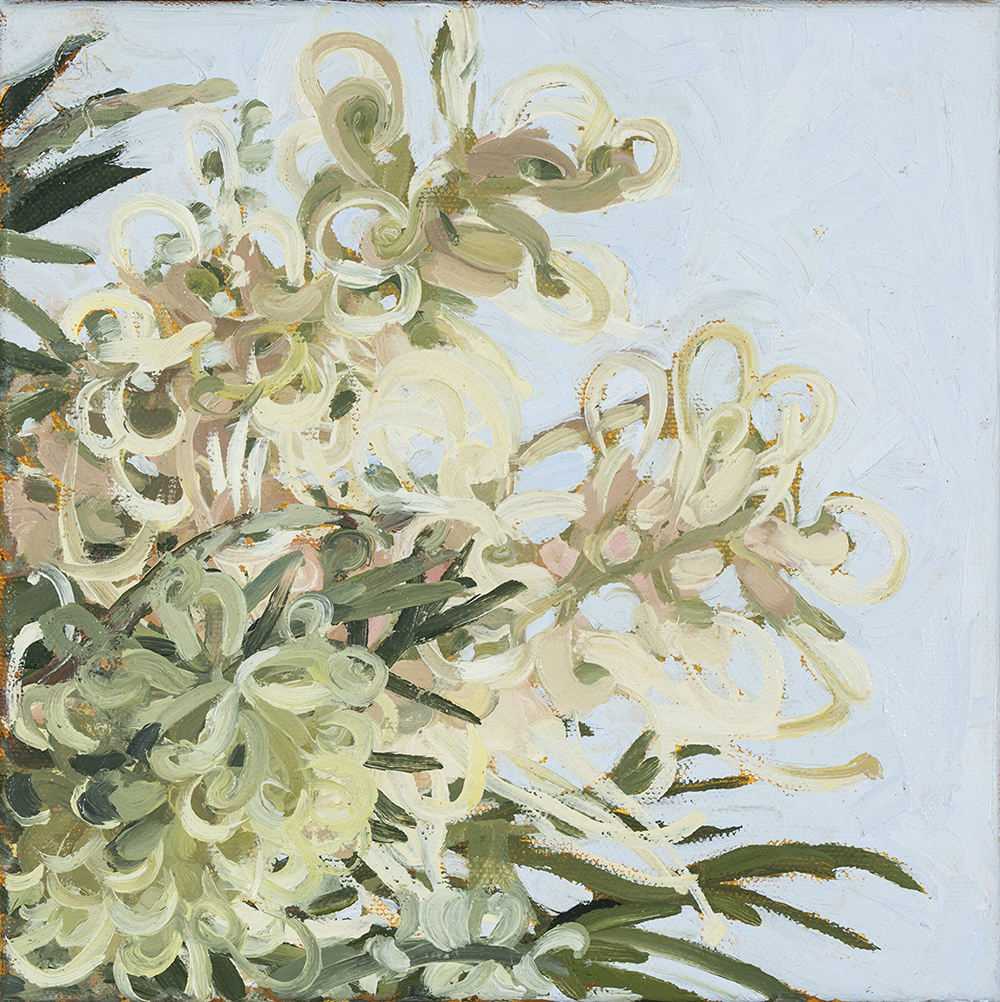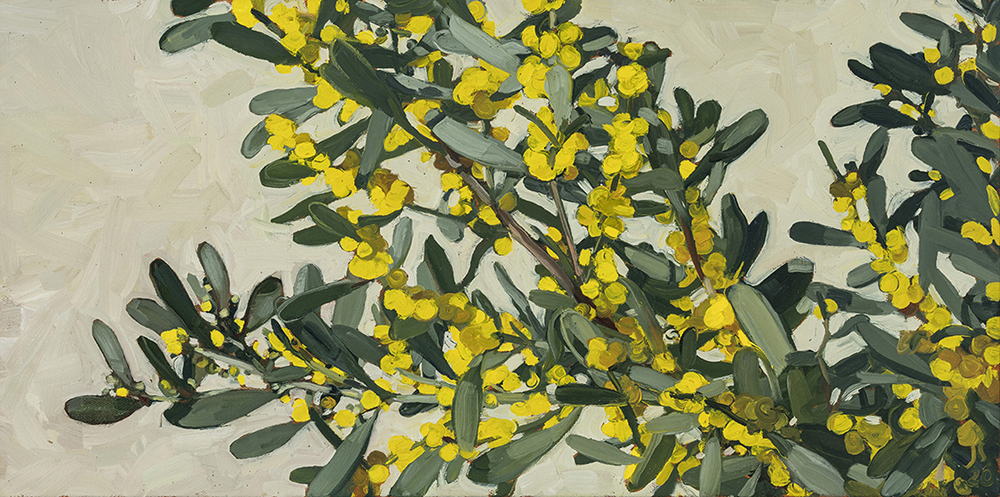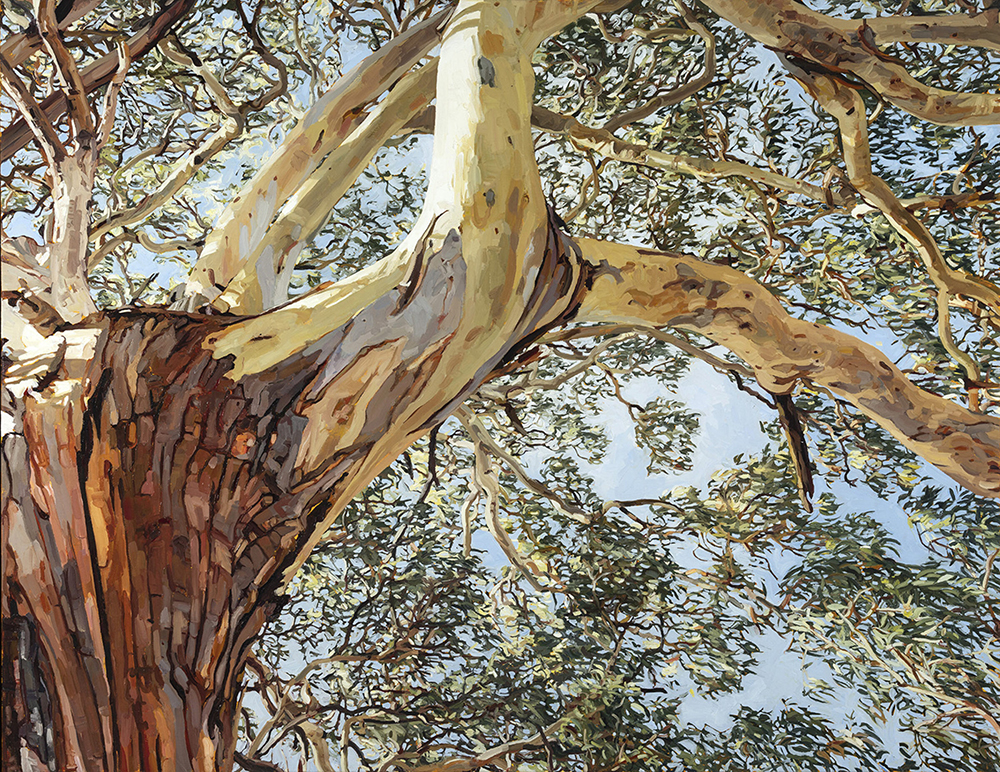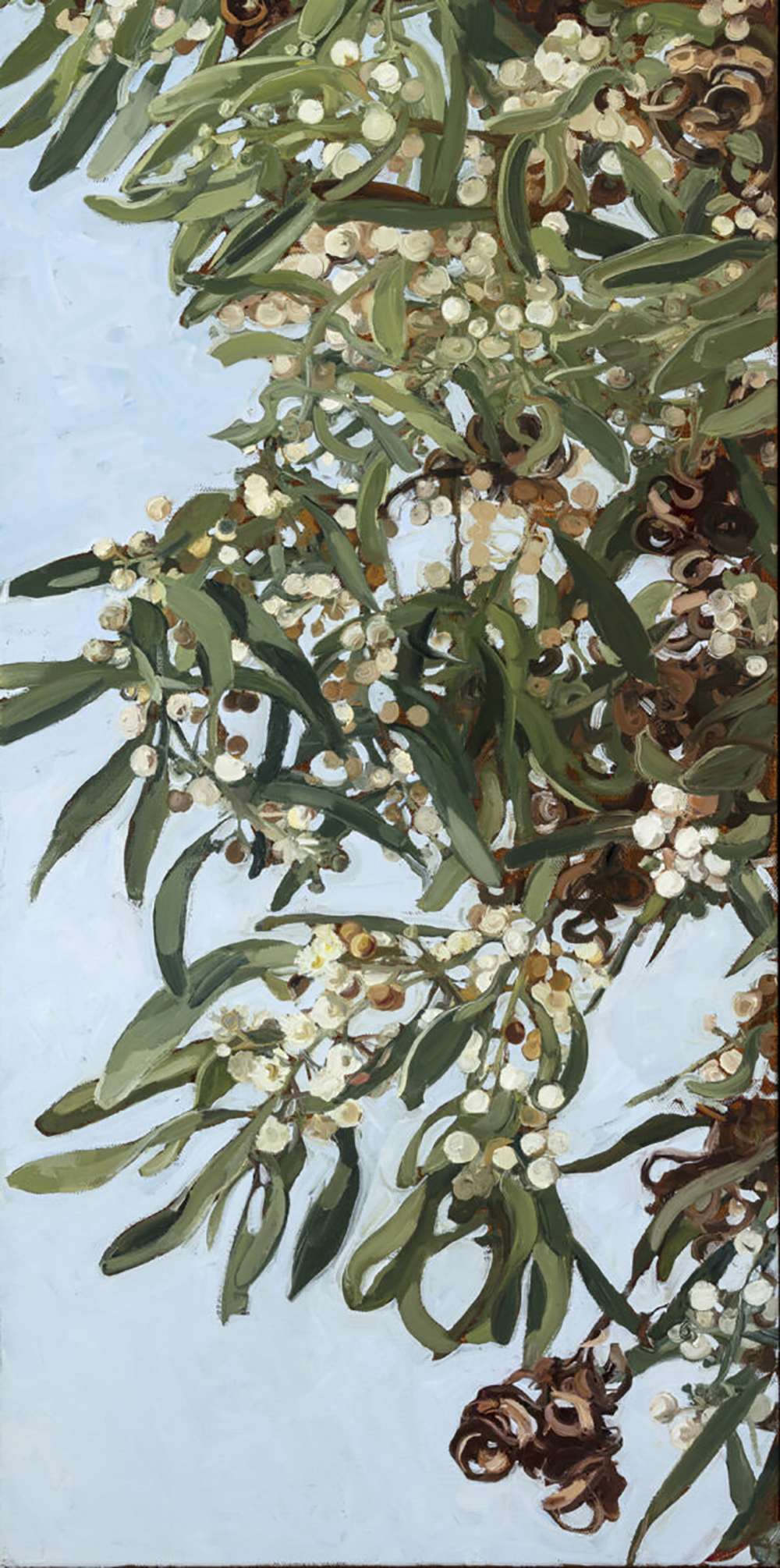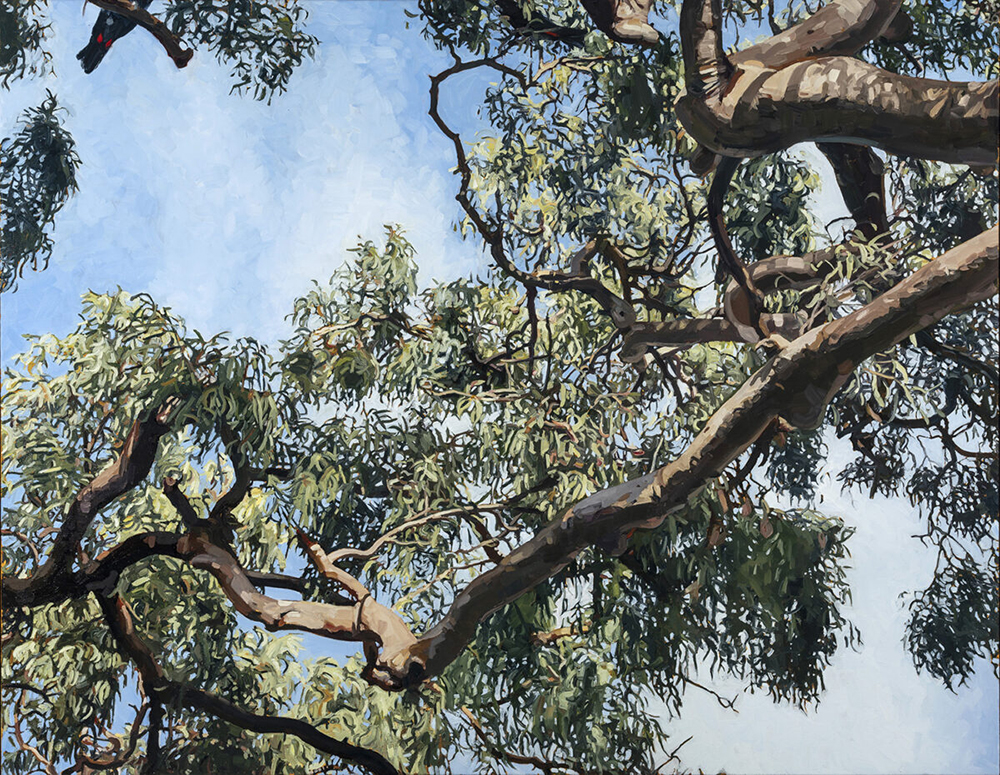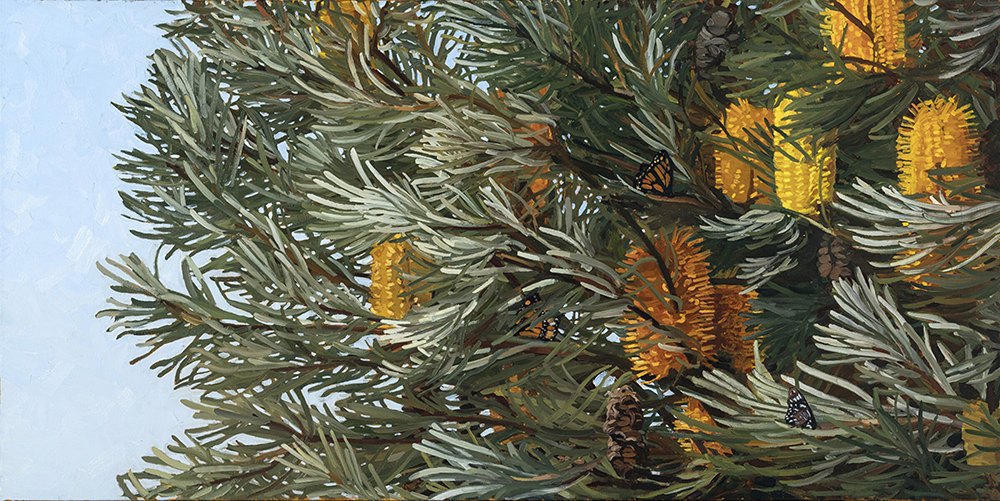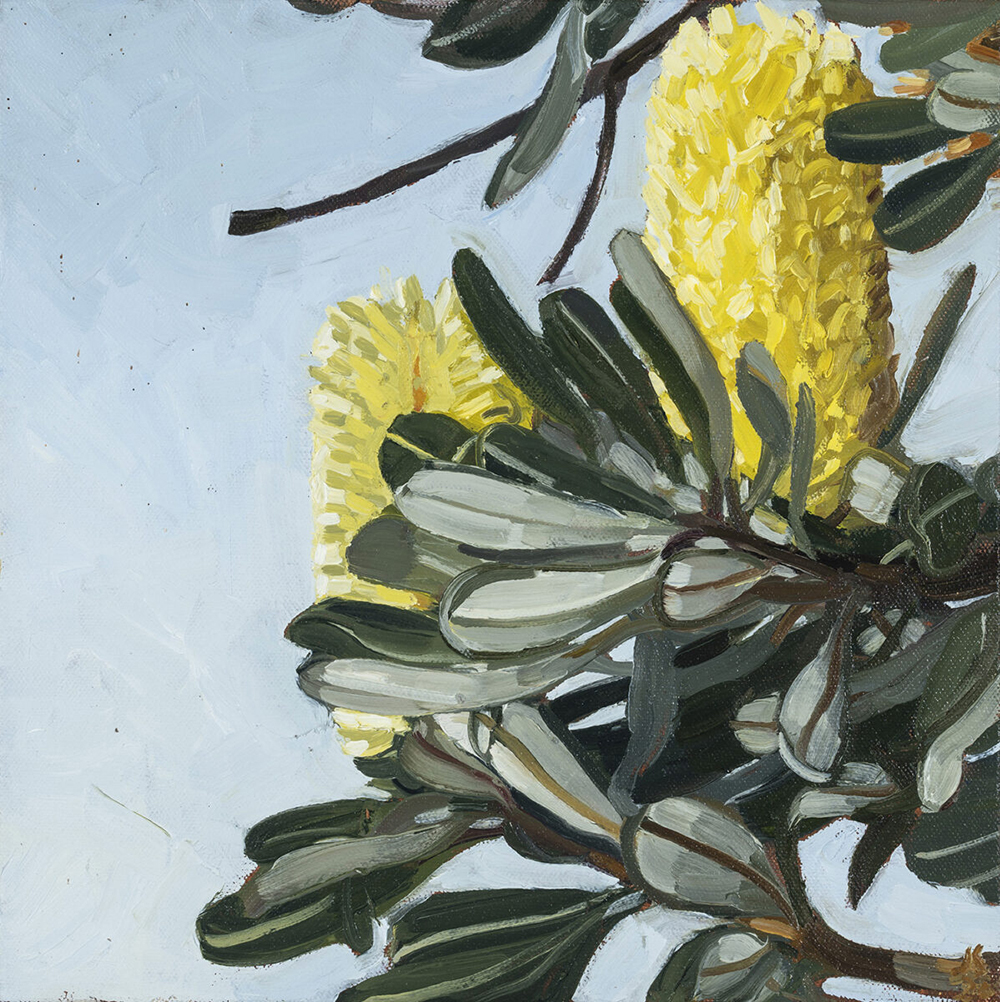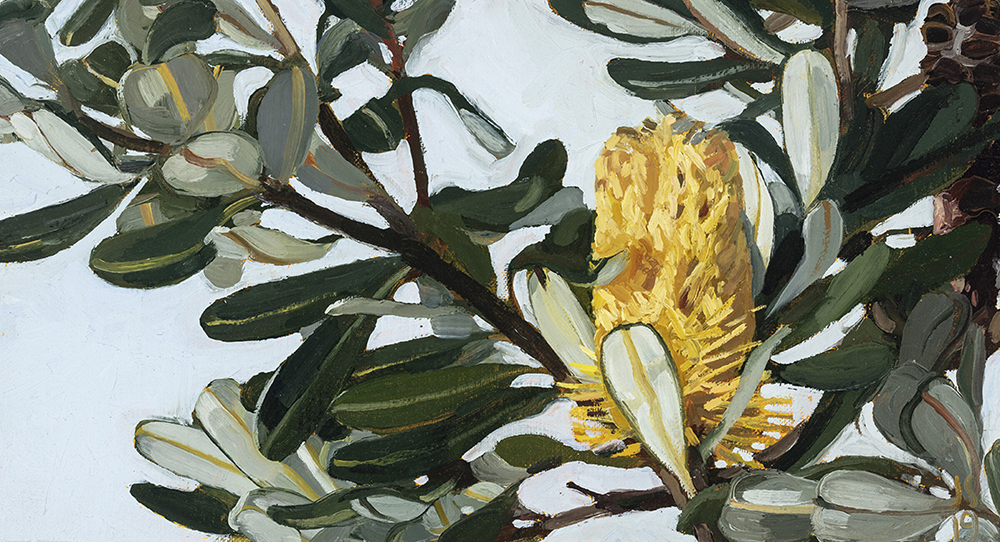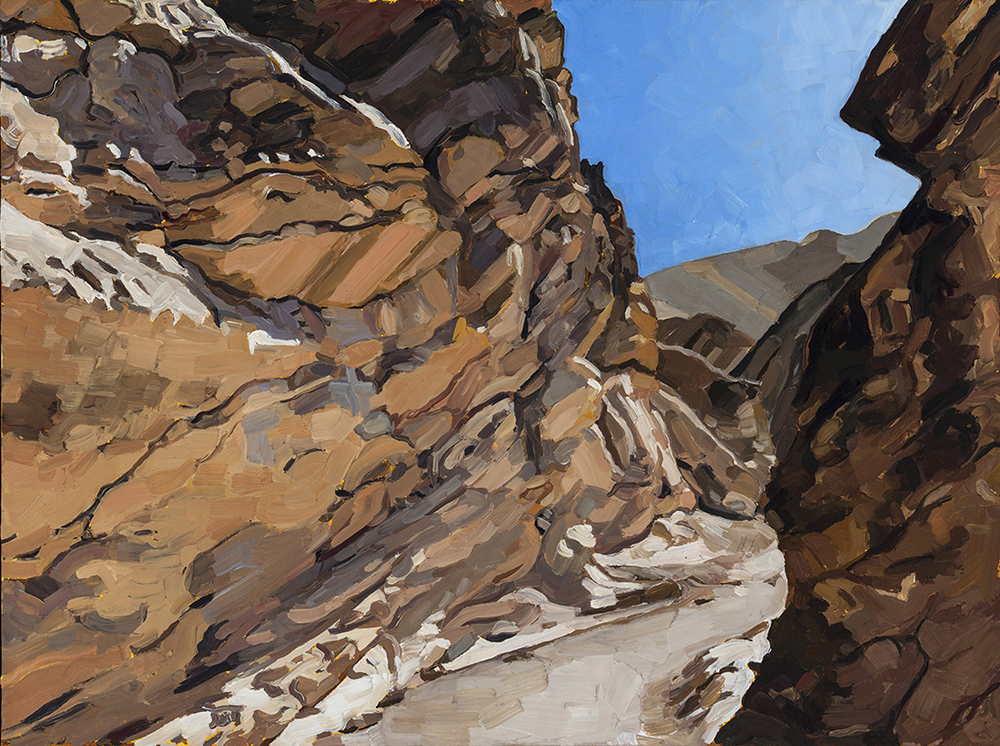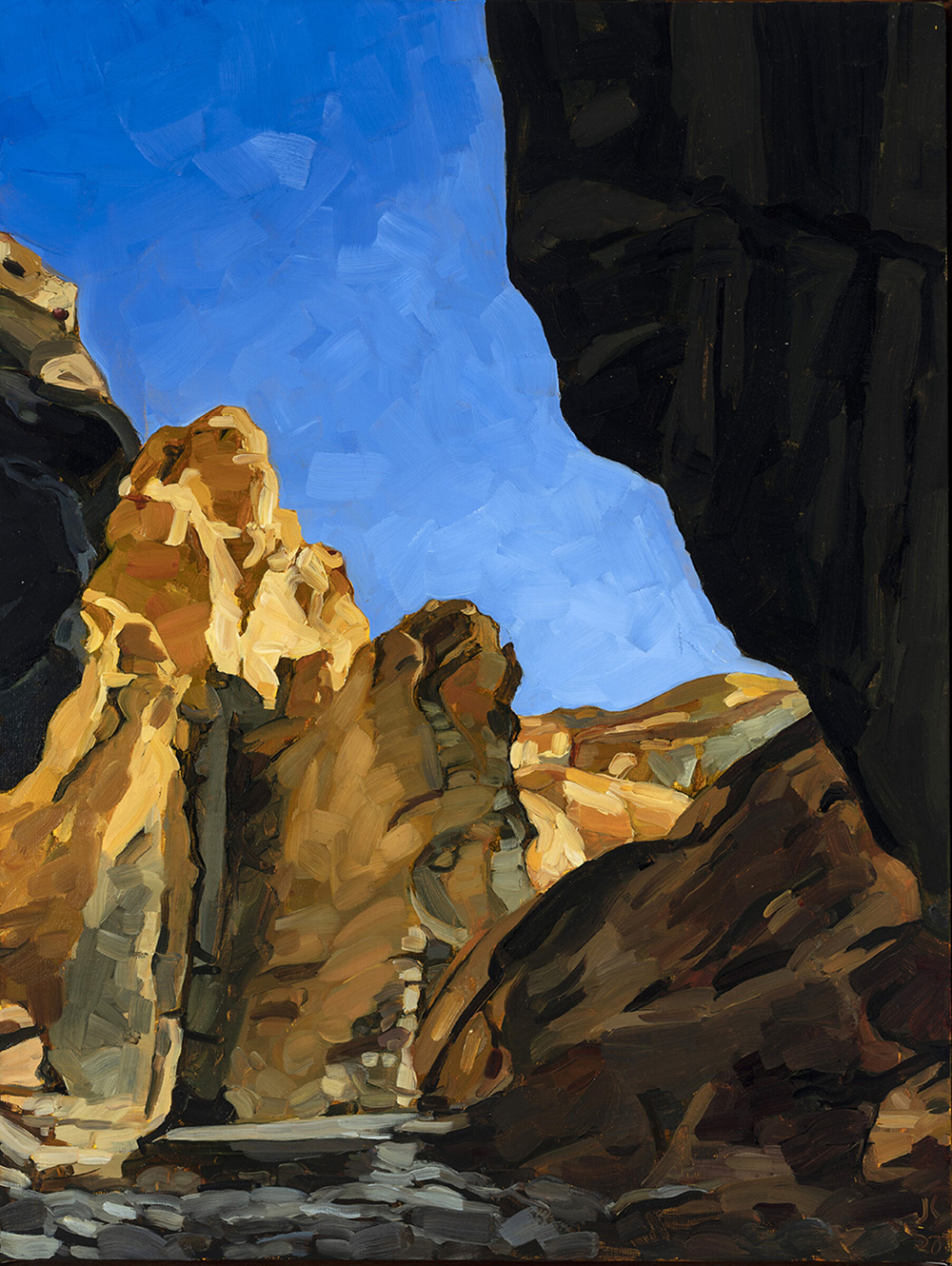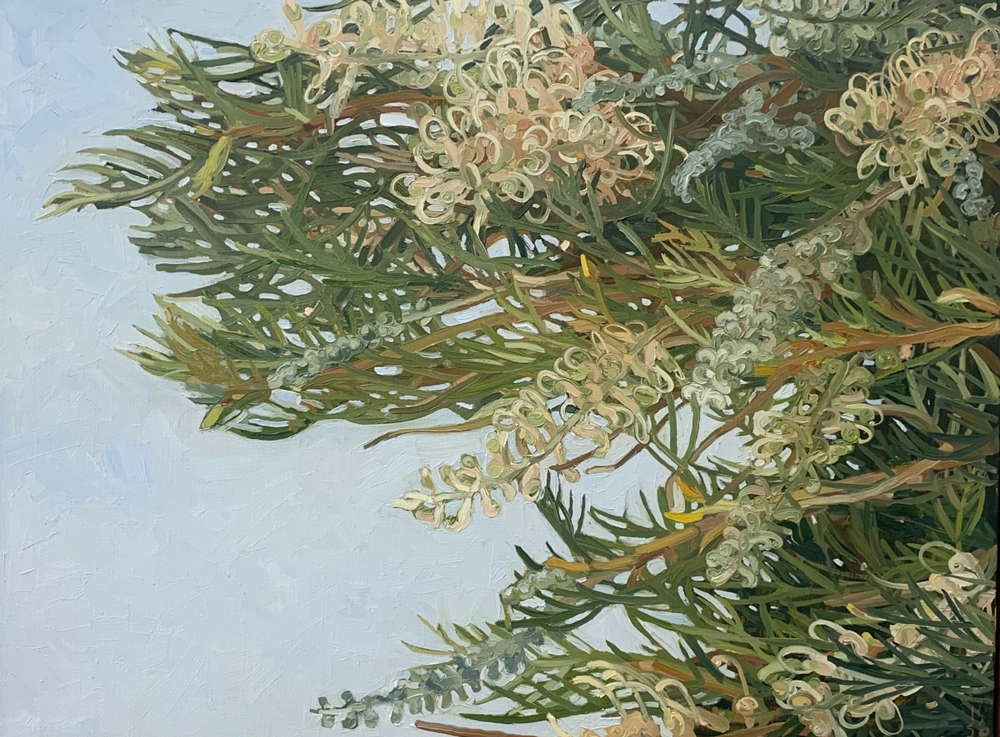ILLUMINATIONS | 2020
EDWINA CORLETTE GALLERY 26 May – 18 Jun 2020
ARTIST STATEMENT
“There are days when the sun’s glare washes out the colour, and the life with it, and days when cloud does. Light decides it. The bush is a medium for light. The effects on our senses are unpredictable, subtly mutable, aleatory. Light rules.” Don Watson The Bush
My current body of work ‘Illuminations’ continues my exploration of light through the medium of paint.
My choice of subject is increasingly that of nature and in particular trees.
TREES
My childhood home was an old workers cottage in inner-city Brisbane perched on the side of a hill that extended out into a huge blackbean tree that filled with rainbow lorikeets in December and active possum families, fruit bats and diamond pythons.at night. My favourite place to be was nestled in the huge arms of the large camphor laurel in the front garden, reading comics, doing my homework or eating mixed lollies. Much time as a kid was spent gazing out from the chalk dust drabness of my state primary classroom at the sundrenched world of swaying eucalypts dreaming of a life of immersion in nature as depicted by Arnhem land first nation children Ricci and Nicci in our school reader, Bush Walkabout.
My subject of trees, particularly Australian native trees, however, is not a given, to be always there, providing sustenance and rejuvenation to the eyes and souls of many. For thousands of years of adaptation to a uniquely harsh Australian climate, the trees and flora of Australia have stabilized the soil, trapped water and CO2 and provided habitat and nourishment for vast ecosystems. As colonial land practices replaced indigenous land management we see those delicate ecosystems decimated, soil blowing freely and the climate change. While recently driving through northern NSW I noticed the stark white ghost-like figures of dead Banksia trees, the first to succumb to prolonged drought and extreme heat. I had heard years earlier that entire forests of Banksia Integrifolia had died from heat stress in Western Australia. That particular species is quick to shut down photosynthesis in order to prevent moisture loss leading to death by starvation. Entire ecosystems have perished in last summer’s bushfires and worse is yet to come. Water tables are given to mining companies and thousands of hectares of habitat are cleared with record speed ‘efficiency’ using circular ‘amazon blades’ that not only kill above, but also below the ground.
In this body of work I have depicted trees from the Granite Belt, Eucalyptus Punctata, the central coast of Queensland, Corymbia Tessellaris, and a range of Eucalypt species transported to California 150 years ago during the gold rush, that I was surprised to find dominated the streetscapes of Los Angeles in my recent time there.
LOOKING UP
My paintings are often from a perspective of looking up, and just as the first brilliant rays of morning sunlight strike the uppermost branches, then flow, filtering down through the leaves and twisted boughs. The limbs have an almost human elegance and flesh like luminosity and drama, evocative of Giambattista Tiepolo’s 18th century upwardly looking Venetian paintings of semi-naked bodies or the outstretched fingers of Michaelangelo’s ‘Creation of Adam’. The colours of leaves and bark at this early time of day are rich and luminous before the harsh flattening of the midday sun. This moment is fleeting and so captured by camera. The images are then transferred to my paint smudged laptop from which I work.
Another method is to cut foliage from a tree and hoist it back to my studio where it is suspended on structures above my canvas with soft light filtering in from the large glass doors.
The presence of the occasional bird or insect within my paintings is a reference to the centrality of trees to life. Not always easy to spot in my painting as in nature – a flicker of leaves, requires stillness to spot the skittish honeyeater or the cumbersome glossy black cockatoo.
LOS ANGELES
The spectacle of eucalypts was central to the design and siting of Charles and Ray Eames home in Santa Monica. The trees were well established when the home was built in between them in the 1940s. My paintings of the Eames House ‘Santa Monica Eucalypts I and 2’ explore the play of light dappled through the sweeping dangling leaves onto the windows and surfaces of the building’s exterior. This modernist architecture sought connection with nature and understood the psychological benefits of immersion within nature.
ILLUMINATIONS
This psychological reaction to nature and light has long been my tonic. I remember as a child the intense sensory experience and relief I felt, emerging from the weatherboard Presbyterian church into the brilliance of mid-morning sunshine. This heightened sensitivity and appreciation of nature is what many I believe are currently experiencing as they venture out from home lockdown during this COVID 19 crisis, dotting the landscape with their picnic rugs along the range on which I live up in the sunshine coast hinterland.

